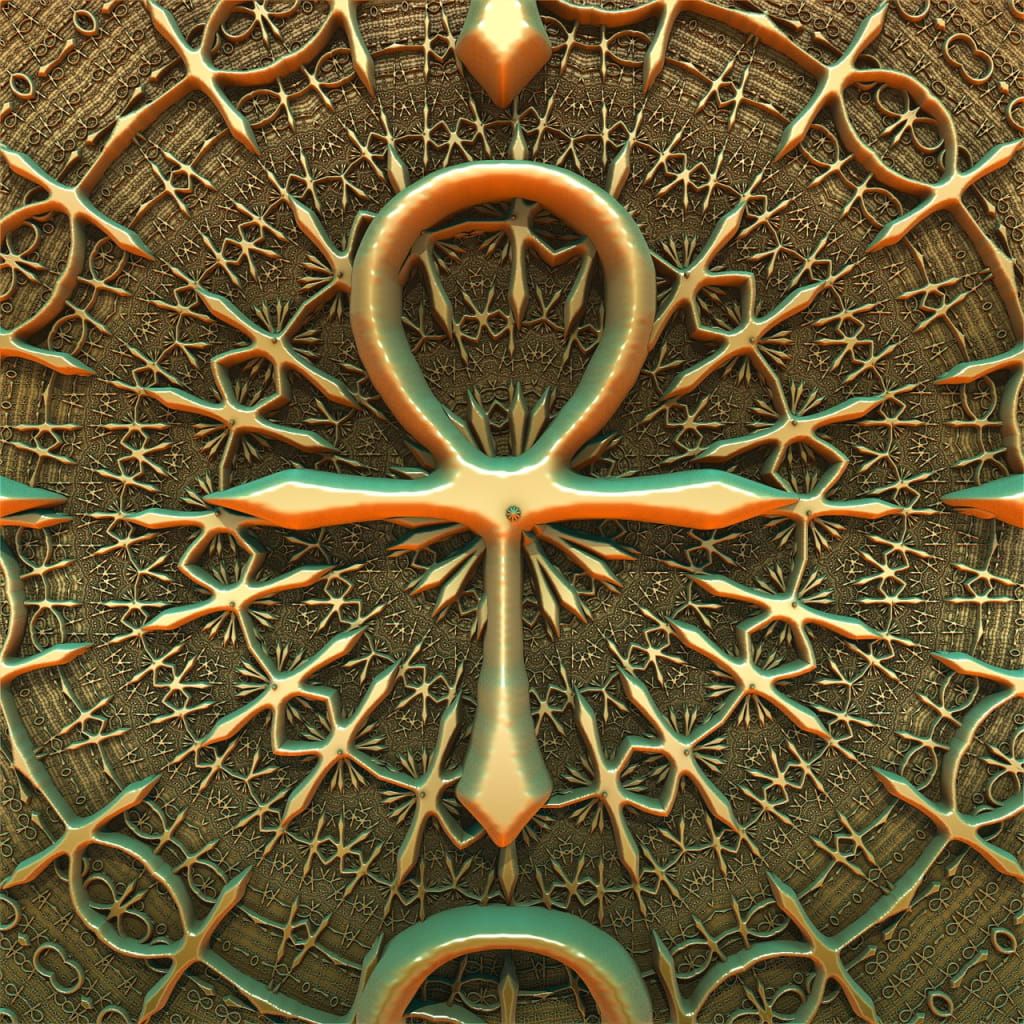Akhenaten: We can all learn.
A Pioneer in New Age Thought

Who was this Visionary?
In the 18th dynasty of the Egyptian civilization a boy was born to the Pharaoh Amenhotep III. His name was given for his father's namesake and in honor of his most beloved god, Amenhotep IV. He was not the first in line to succeed his father; however, when his older brother died suddenly he was appointed the heir.
In the year 1352 B.C.E. Amenhotep IV became sole ruler of Egypt and by all conventional means it seems he was fairly normal and status-quo for a Pharaoh.
As time wore on, however, things shifted more and more.
How did this Transition Occur?
Amenhotep IV was originally an adherent of the traditional Egyptian deities, including the all powerful god so cherished by many of his predecessors, Amun. Although, for reasons unclear to many historians, Amenhotep IV seems to have had a strong dislike for this deity.
It's unclear whether he had a personal motive for this or if it was more political, but by the 3rd year of his reign he had changed his name from Amenhotep IV to Akhenaten. This is significant. His name went from being "Amun is pleased" to "The effective one for the Aten."
He was showing a clear transition from the adherence to the all powerful hidden god (Amun is literally "the hidden one") to the Aten ("the Sun Disk") which is known and seen.
Amarna and the New God
The transition from the traditional worship of the Egyptian pantheon was gradual but evident. One of the first signs was his name change, and then the removal of the plural word "gods" to the singular "god". He was sending a very clear message: There is only one god, and it isn't Amun, it the Sun Disk Aten.
In Thebes, the capital of Egypt at the time of Akhenaten's ascension to the throne, was also the "home" of the god Amun and his devoted priests. The priests of the god Amun were almost equal in power and wealth to the Pharaoh himself and it seems that Akhenaten was not fond of this.
Around the 3rd or 4th year of his reign Akhenaten moved his family and followers from Thebes to a region north. The region was not a favored place of any of the gods and therefore was to be the home of the new god, Aten. This city was named "Akhetaten" or "the horizon of the Aten", and known as "Amarna" to modern historians.
The temple of the Aten was an open faced temple, the sun rays welcomed with no roof obscuring them from reaching the adherents. This was the perfect illustration of how this god differed from the obscure, hidden practice of the worshipers of Amun.
Some Modern Views Housed in Amarna
Akhenaten displayed himself and his family as the sole conduit between the Egyptians and the Sun Disk. In other words, there was no priest aside from the royal family, and they were the ones who brought the blessings of the Sun Disk to the Egyptians.
The Sun Disk meant more equality for more people, because Akhenaten saw this Disk as spreading its hands and love on all creation equally. This is why in illustrations of the royal family for the first time ever, the king and the queen are seen as the same size. Nefretit, the main wife of Akhenaten, is shown standing beside him in equal stature and equal prominence.
There is also a clear focus on displaying authenticity. The king and queen are shown affectionately embracing, kissing, and cuddling their young daughters. Ever present is the Sun Disk with outstretched arms and hands embracing the whole land.
Lastly, the king is not shown as strictly masculine, nor is the queen strictly feminine. In the largest statue of Akhenaten found in Amarna he is shown with female hips and no penis. This has lead some historians to speculate that he may have been born a eunuch or perhaps infertile. Although, this seems unlikely since he is has been shown to be the father of multiple children with his 3 total wives.
Nefretiti in her most famous image (the bust of Nefretiti) is actually shown wearing the king's blue war helmet. Even the great female king Hatshepsut never wore this crown, yet this queen is shown in all her feminine splendor wearing the most masculine of headdresses.
The historical and religious significance surrounding the strange art and social structure of the Amarna period is not fully understood. Although, it seems clear that the traditional views of male and female was not something which the Aten embraced.
Was it all Pleasure in Paradise?
As with most Utopian societies, there is always trouble in paradise. No matter how optimistic your views for humanity may be, we still live in a world full of suffering. It was no different for Amarna.
One of the first, less obvious issue, was just an example of how Akhenaten was clearly a religious and philosophical visionary but not an architect. The temple of the Aten sounds like it would be a glorious sun bathed temple where worshipers were basking in sun rays.
The reality was many suffered heat stroke in the unbearable midday heat. An Assyrian ambassador actually wrote a letter of outrage about his emissaries which nearly died in the heat of the temple.
This story illustrates another short coming of this Pharaoh: a lack of international leadership. He permitted his outposts fall into utter disarray, and even ignored one of his mayors in Lebanon who wrote pleading for help against invaders.
The Pharaoh Akhenaten was clearly a visionary, a sincere believer in his god, and a modern influential leader for his time. Although, by the time he died, his kingdom had fallen into disarray with huge amounts of debt and in-fighting.
His vision was beautiful, one of a world bathed equally in the warm embrace of the sun. However, many are still not ready for such an image and the dream gets lost in the echoes of the desert.
About the Creator
Emily Marie Concannon
I am a world nomad with a passion for vegan food, history, coffee, and equality.
You can find my first novel on Kindle Vella here: https://www.amazon.com/kindle-vella/story/B09V4S7T4N :) I appreciate all your support and engagement! :)






Comments
There are no comments for this story
Be the first to respond and start the conversation.